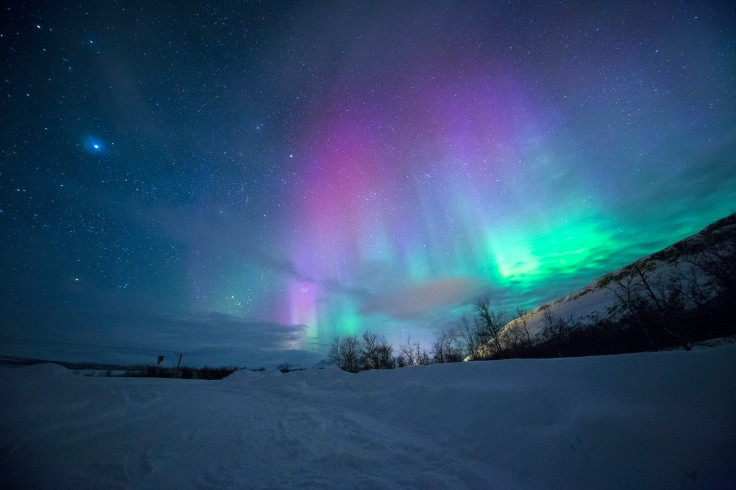
A geomagnetic storm currently sweeping across parts of the United States is lighting up the night skies with brilliant displays of the aurora borealis, while also prompting heightened monitoring of power grids, communications networks and satellites.
The G2 (moderate) geomagnetic storm, confirmed by NOAA Space Weather Prediction Center, began late on 16 October 2025 and is expected to continue into the following day.
The phenomenon is visible in northern US states and comes as solar activity intensifies under solar cycle 25.
What Is an Aurora Borealis Geomagnetic Storm?
An aurora borealis geomagnetic storm occurs when charged particles from the Sun collide with Earth's atmosphere. These particles are typically carried by a coronal mass ejection or high-speed solar wind streams that compress the planet's magnetic field.
The collision excites atmospheric gases, producing the green and red lights often seen in the night sky.
Geomagnetic storms are measured on a scale from G1 to G5, with G2 considered moderate. A G2 storm can push the auroral oval farther south than usual, making the northern lights visible beyond their typical range.
According to Space, auroras may be visible in as many as 15 US states during the current storm, extending well beyond the usual high-latitude viewing zones.
This week's storm follows several recent periods of solar activity, including G3 and G4 level disturbances earlier in the year, which produced widespread auroral displays across the United States.
According to NOAA's 3-Day Geomagnetic Forecast, geomagnetic activity is expected to vary over the next 24 hours, with night-time periods often being key for auroral visibility.
Power Grids Face Subtle Strain During Storms
Although the aurora borealis is best known for its stunning visuals, geomagnetic storms can affect terrestrial infrastructure. As solar particles interact with Earth's magnetic field, they can induce electric currents in long power transmission lines.
These geomagnetically induced currents may stress transformers and other grid components, particularly in northern latitudes where the effects are stronger.
During previous strong storms, including a G4 event in May 2025, utilities reported minor voltage fluctuations but avoided major disruptions.
Power grid operators across the United States have monitoring systems in place to detect abnormal currents and prevent large-scale outages.
Experts note that while severe blackouts are unlikely during moderate storms, continuous monitoring remains essential to maintain grid stability.
GPS and Communication Systems Can Be Disrupted
Geomagnetic storms also interfere with satellite-based communications and navigation. When the upper atmosphere becomes disturbed, GPS signals may be delayed or refracted, reducing positional accuracy.
Aviation and maritime operators are particularly sensitive to these disruptions. During heightened solar activity, airlines may adjust flight paths or rely on backup navigation systems to maintain safety standards.
Temporary signal degradation is not uncommon, though it usually lasts only as long as the most intense part of the storm.
NOAA and other agencies provide alerts to critical sectors when geomagnetic disturbances are expected, allowing operators to plan ahead.
Satellites Face Increased Drag and Radiation Exposure
Satellites orbiting close to Earth are also vulnerable during geomagnetic storms. Increased atmospheric drag can alter their orbits, while elevated radiation levels may affect on-board electronics and sensors.
Satellite operators often place spacecraft in safe mode or adjust orbits to minimise potential damage during severe events.
NASA and NOAA have both issued guidance to satellite companies to remain on alert during the current G2 storm. While moderate storms rarely cause long-term harm, they can increase operational risks, especially for low-Earth orbit satellites.
Space weather specialists continue to track solar activity closely as solar cycle 25 intensifies. With more CMEs and coronal holes expected, both agencies emphasise the importance of preparedness for satellite operators and infrastructure providers alike.
Rising Solar Activity Brings Broader Implications
This week's aurora borealis geomagnetic storm underscores the dual nature of space weather. While millions are stepping outside to witness the northern lights, operators of power grids, navigation systems and satellites are quietly on alert.
As the Sun approaches the peak of its 11-year cycle, more geomagnetic disturbances are likely. Increased storm frequency means both stunning night-time spectacles and renewed focus on protecting critical technology that keeps modern society connected.







